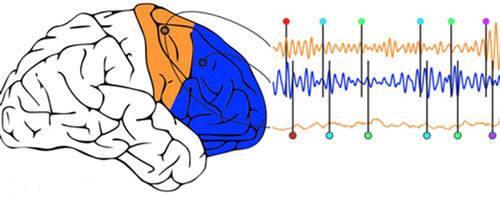[Update 12/17/2012 Another paper discussing the efficacy of using tDCS to enhance working memory. Transcranial direct current stimulation of the prefrontal cortex modulates working memory performance: combined behavioural and electrophysiological evidence]
Working memory, as associated with ‘brain training’ and ‘plasticity‘, is often expressed as what one would wish to have more of, or at the very least, what one hopes not to lose as we age. (For a great overview of working memory and the how’s of enhancing it, see this fascinating post from neuroscientist Bradley Voytek’s blog Working memory and cognitive enhancement.)
Our aim was to determine whether anodal transcranial direct current stimulation, which enhances brain cortical excitability and activity, would modify performance in a sequential-letter working memory task when administered to the dorsolateral prefrontal cortex DLPFC. Fifteen subjects underwent a three-back working memory task based on letters. This task was performed during sham and anodal stimulation applied over the left DLPFC. Moreover seven of these subjects performed the same task, but with inverse polarity cathodal stimulation of the left DLPFC and anodal stimulation of the primary motor cortex M1. Our results indicate that only anodal stimulation of the left prefrontal cortex, but not cathodal stimulation of left DLPFC or anodal stimulation of M1, increases the accuracy of the task performance when compared to sham stimulation of the same area. This accuracy enhancement during active stimulation cannot be accounted for by slowed responses, as response times were not changed by stimulation. Our results indicate that left prefrontal anodal stimulation leads to an enhancement of working memory performance. Furthermore, this effect depends on the stimulation polarity and is specific to the site of stimulation. This result may be helpful to develop future interventions aiming at clinical benefits.
via Anodal transcranial direct current stimulation of prefrontal cortex enhances working memory – Springer.
full pdf
This 2011 paper does confirm positive results of tDCS in a similar application and test setup. Improving working memory: exploring the effect of transcranial random noise stimulation and transcranial direct current stimulation on the dorsolateral prefrontal cortex.
However, the study does provide confirmation of previous findings that anodal tDCS enhances some aspects of DLPFC functioning.

